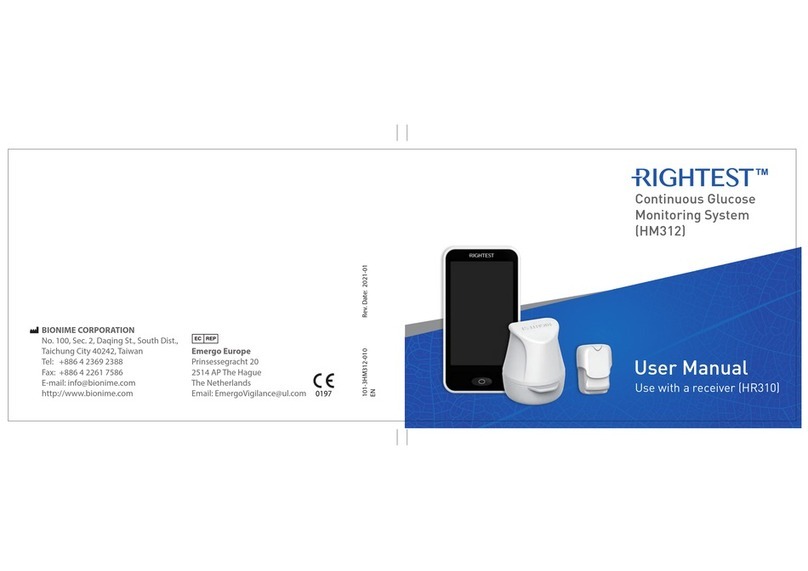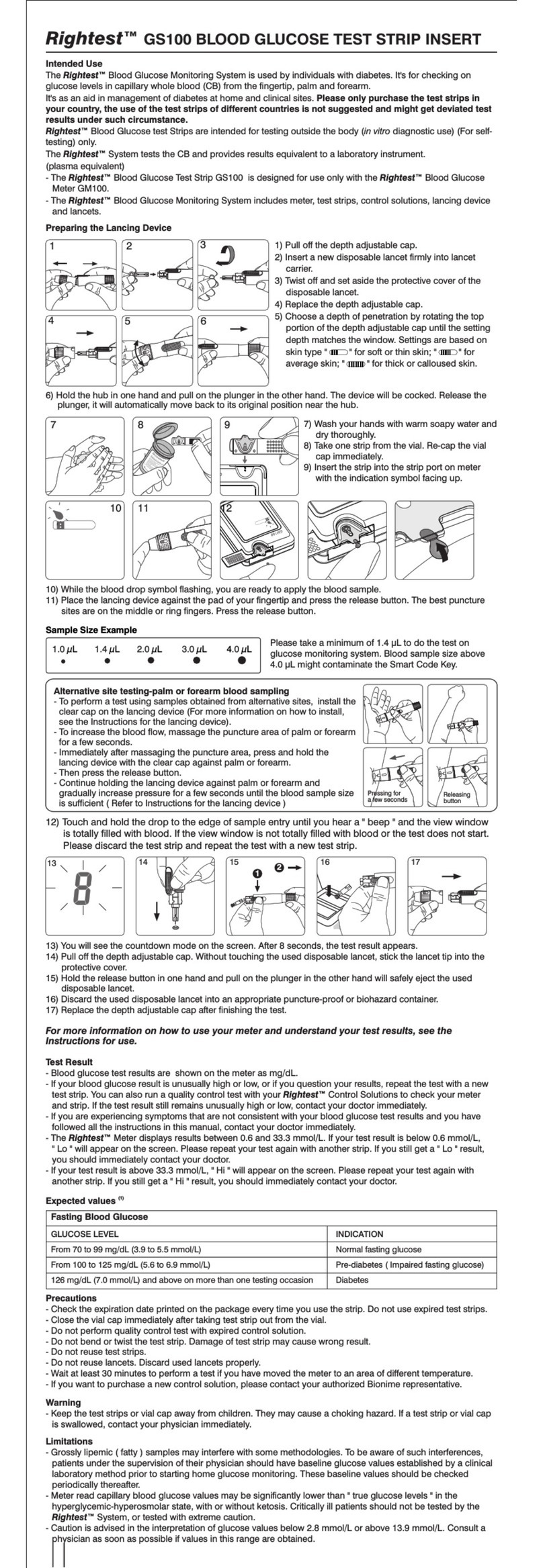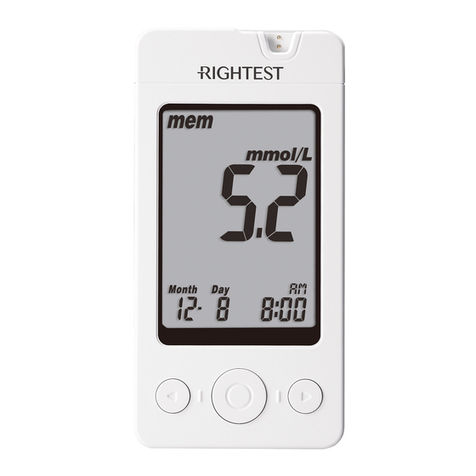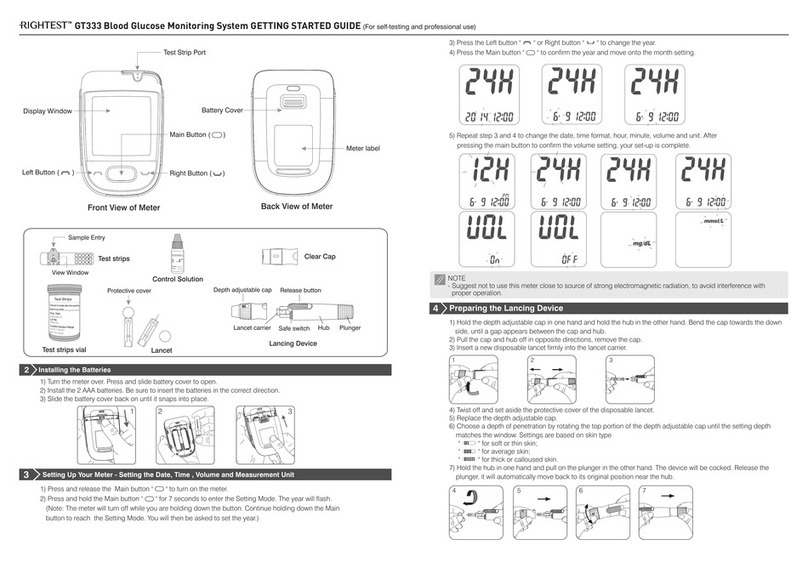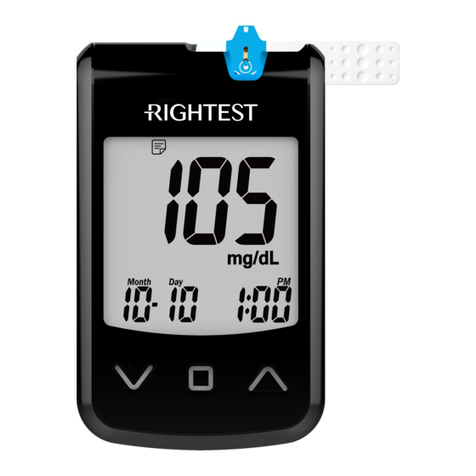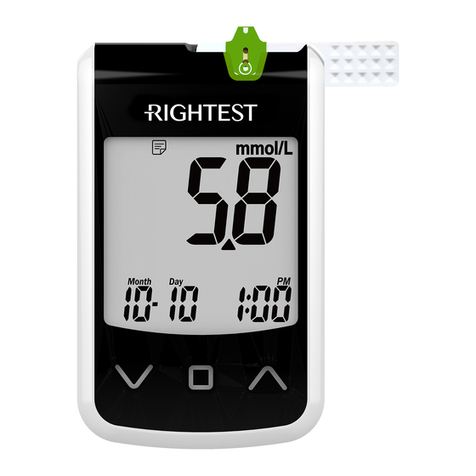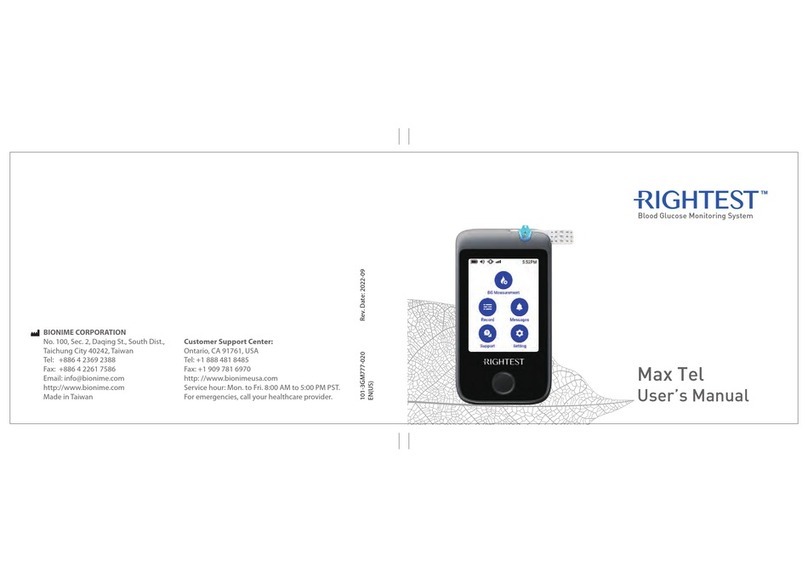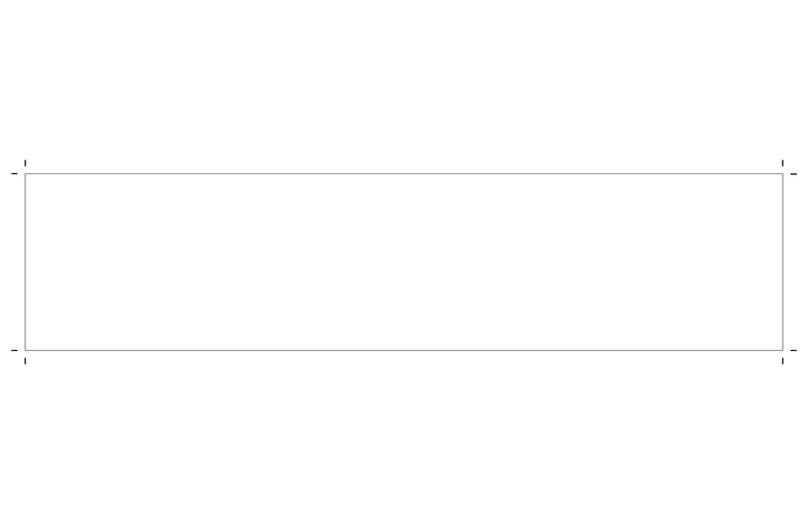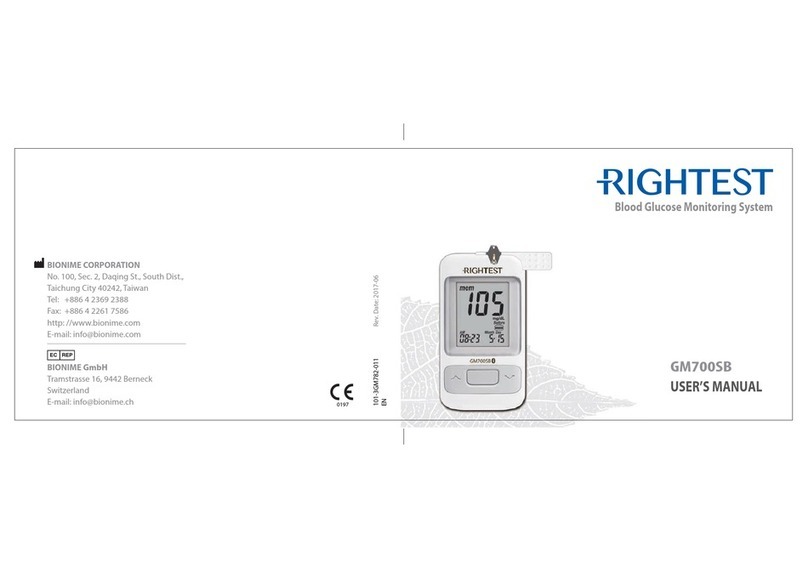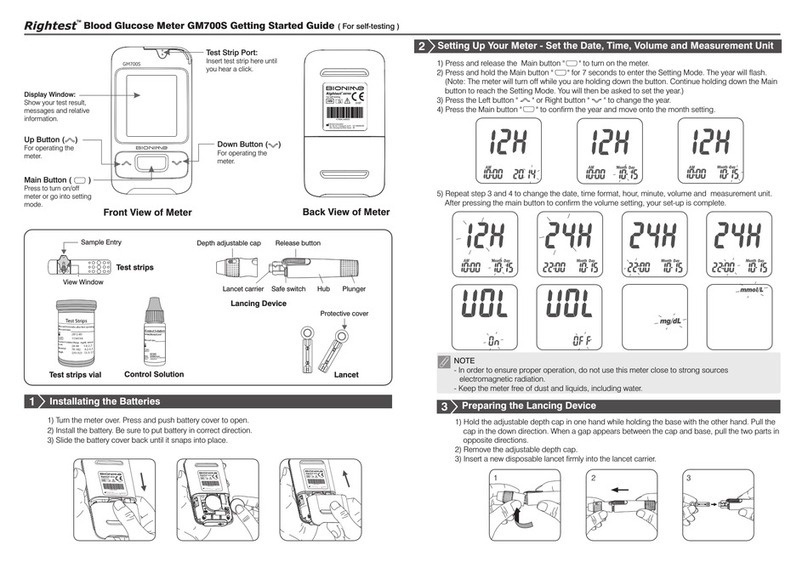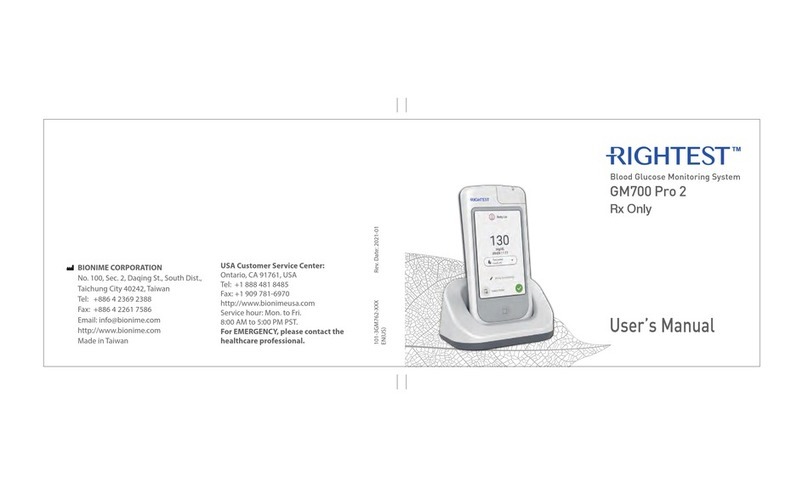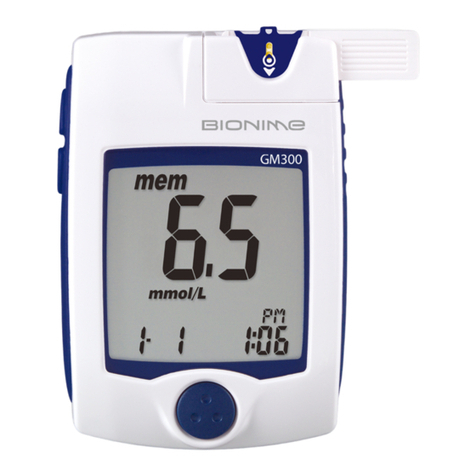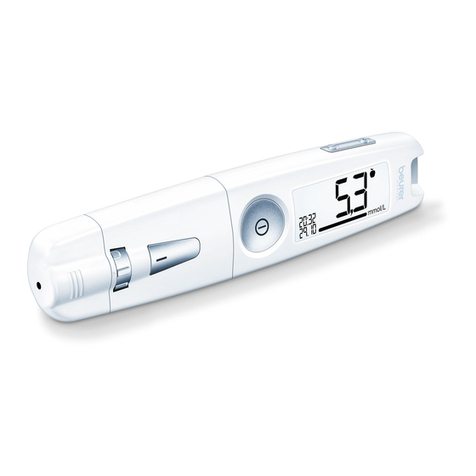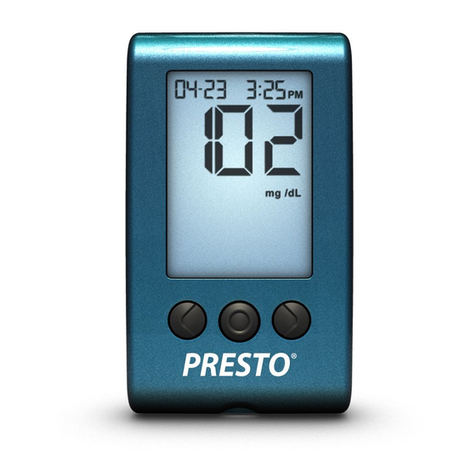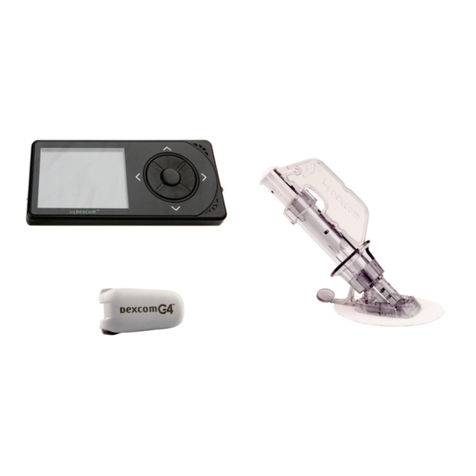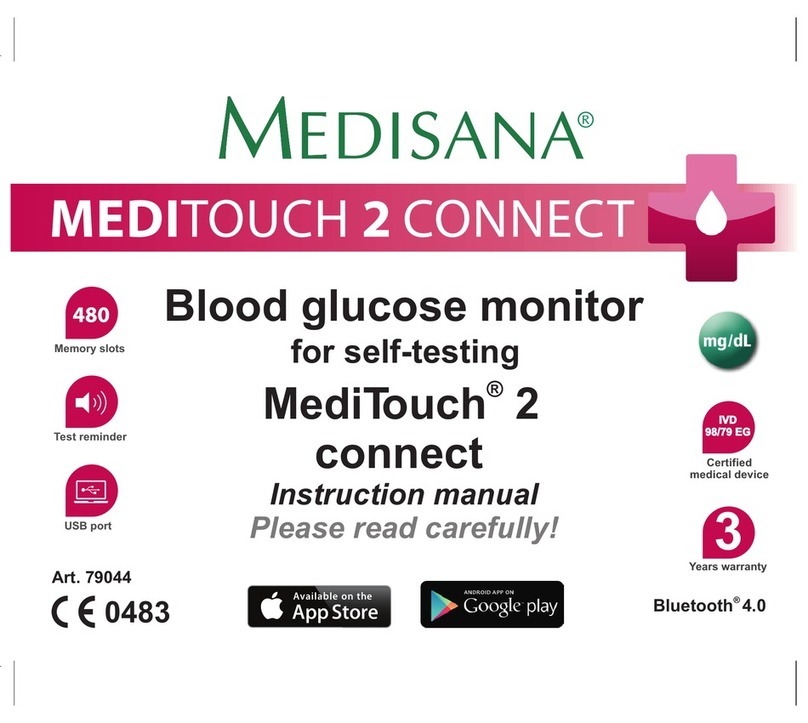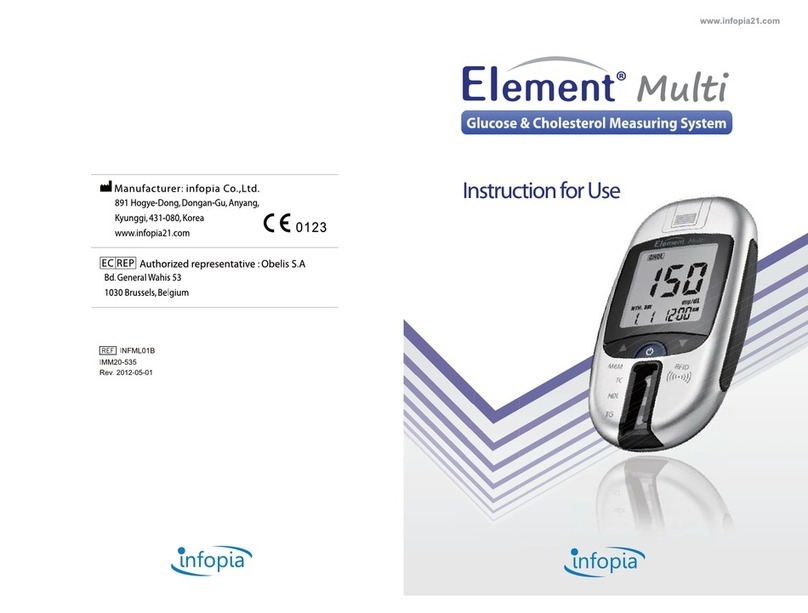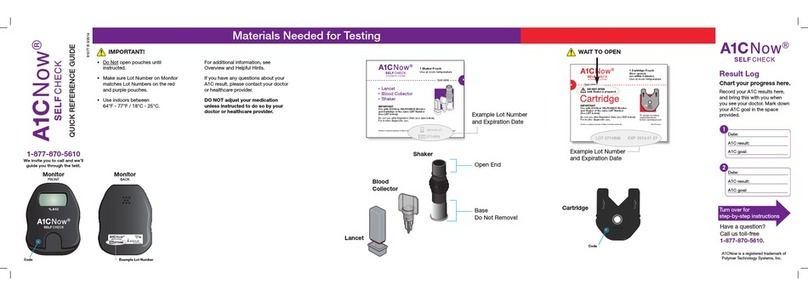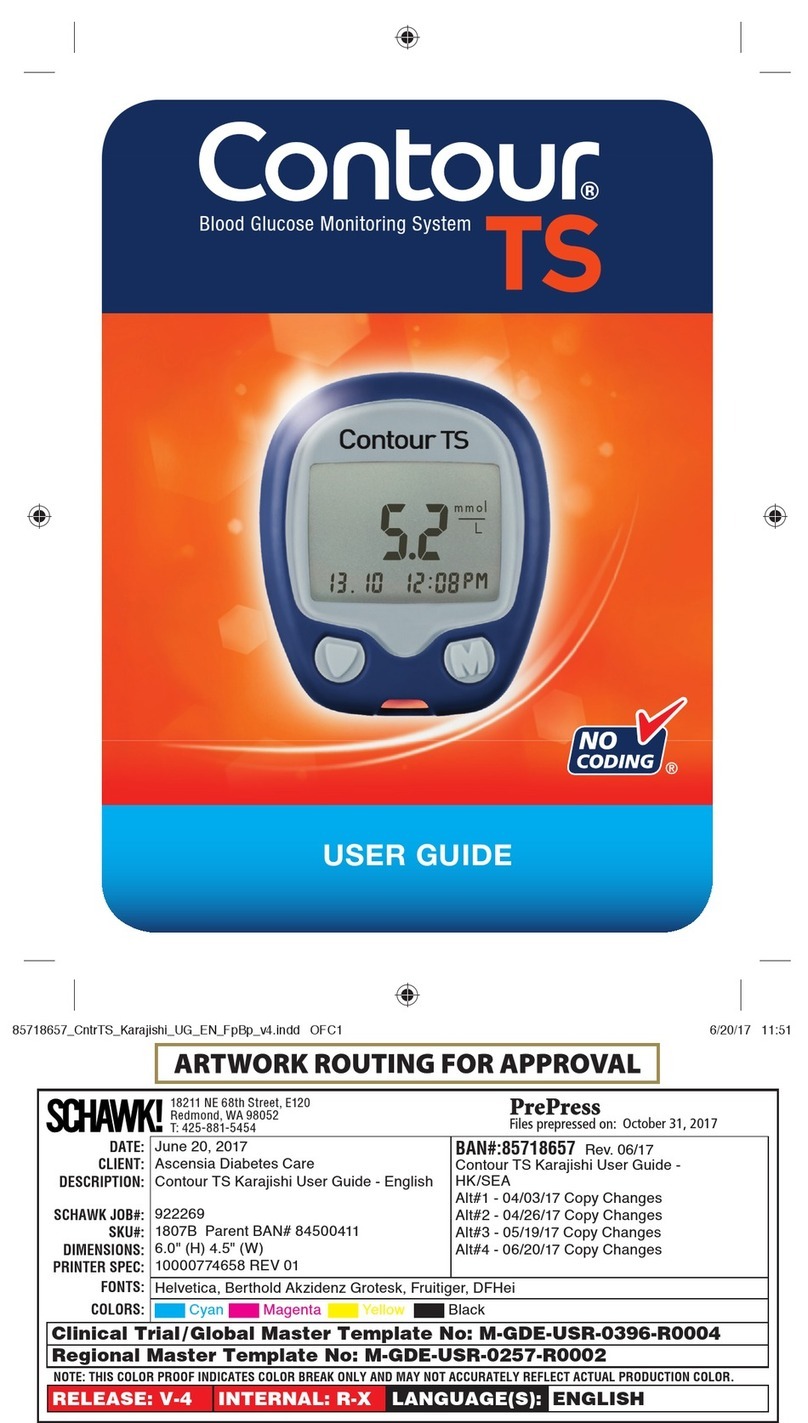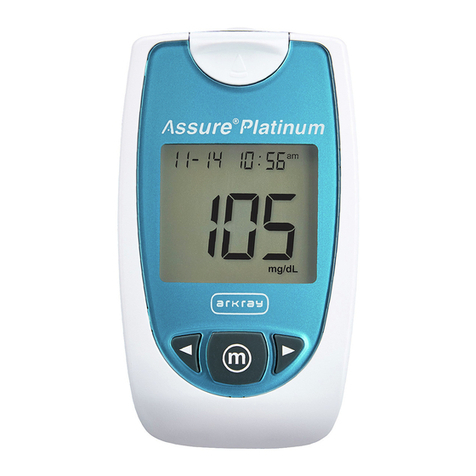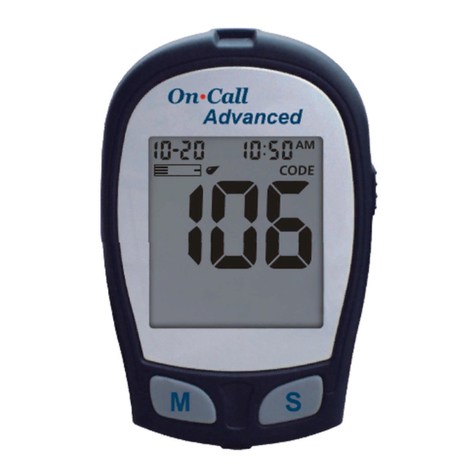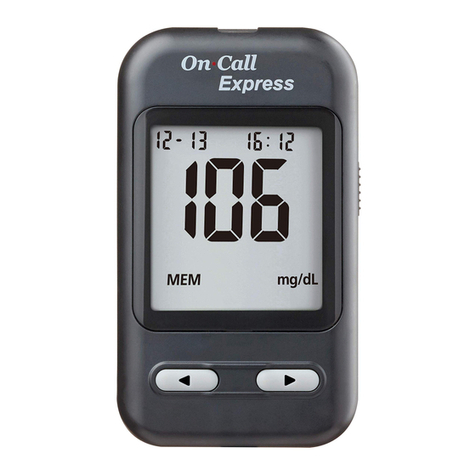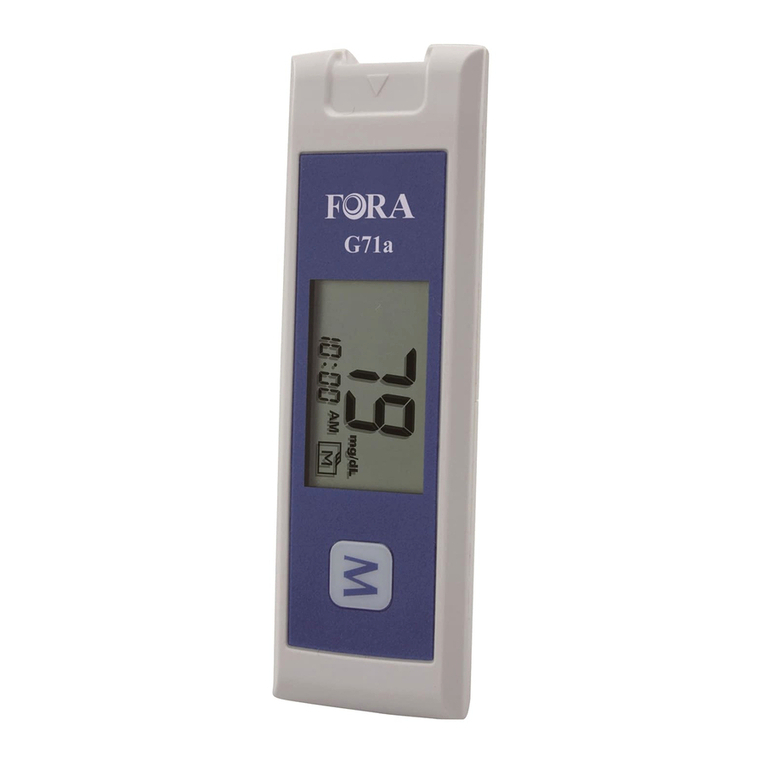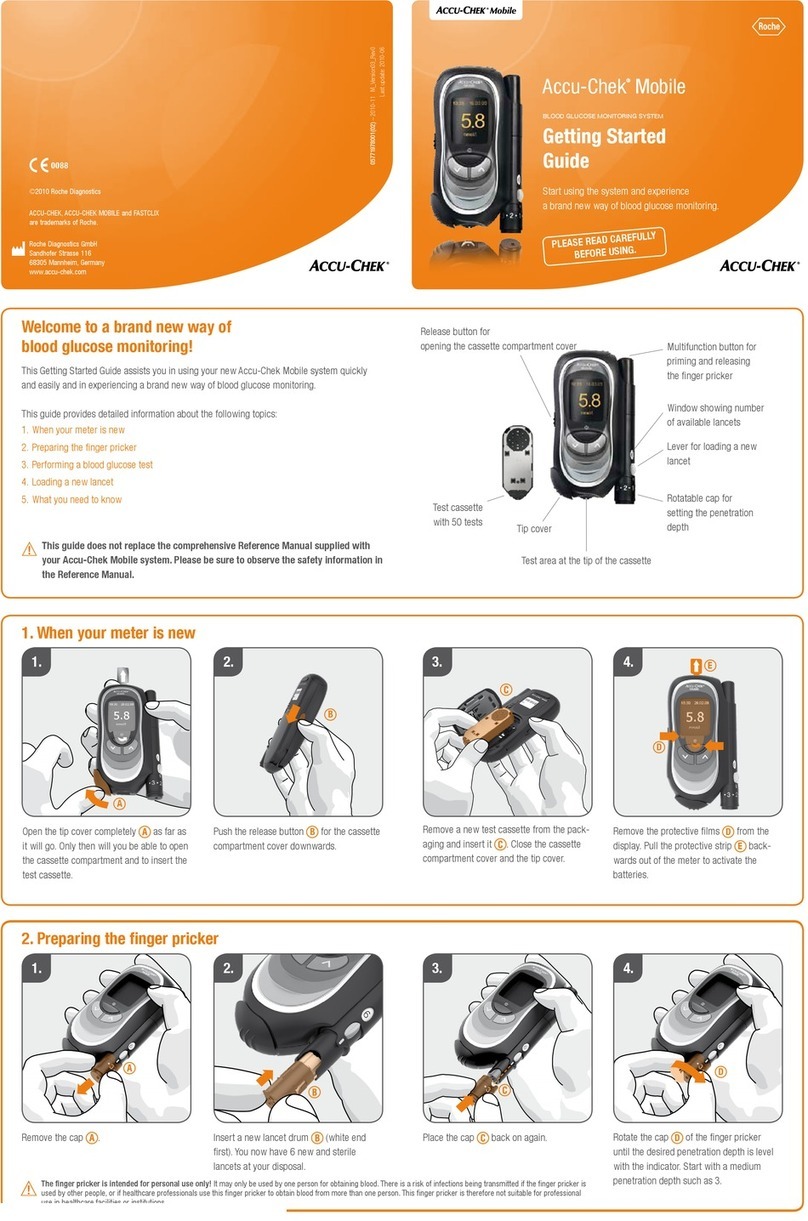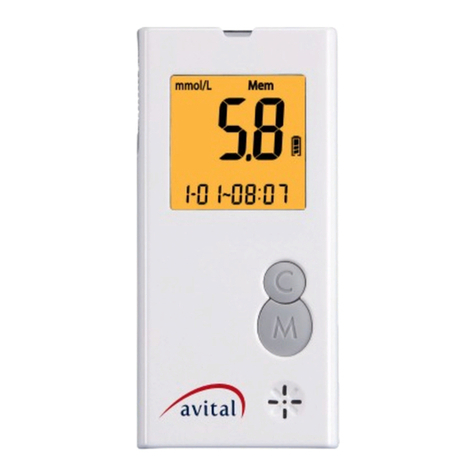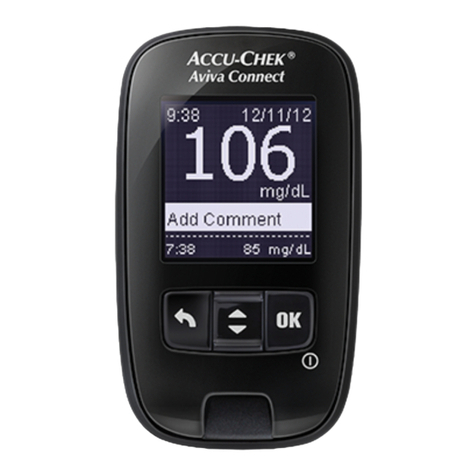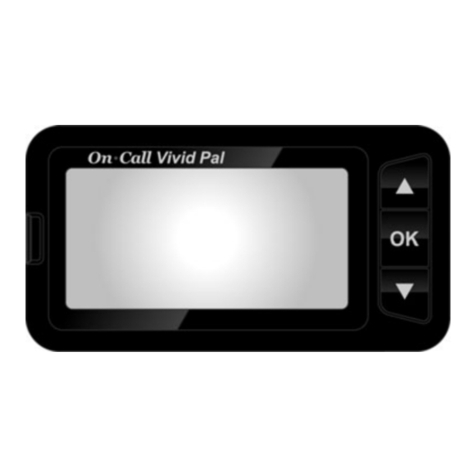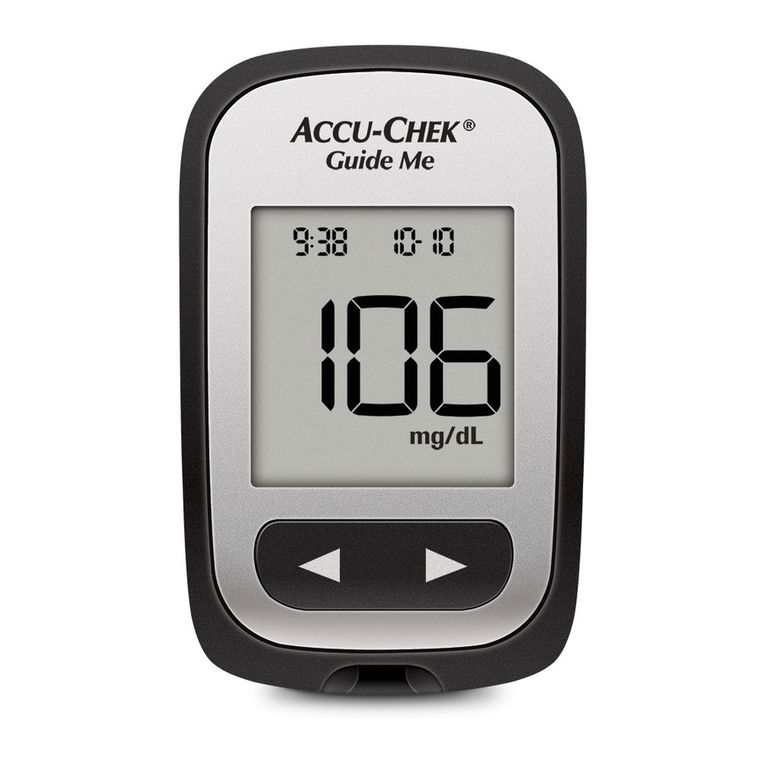Intended Use
The Blood Glucose Monitoring System is used by individuals with diabetes.
Rightest™ test Strips are intended for testing outside the body ( diagnostic use) (For self-
testing) only.
The Rightest™ System tests the CB and provides results equivalent to a laboratory instrument.
(whole blood equivalent)
- The Rightest™ is designed for use only with the Rightest™ Blood Glucose
- The Rightest™ Blood Glucose Monitoring System includes meter, test strips, control solutions, lancing device
and lancets.
Rightest™
in vitro
It's for checking on
glucose levels in capillary whole blood (CB) from the fingertip, palm and forearm.
It's as an aid in management of diabetes at home and clinical sites. Please only purchase the test strips in
your country, the use of the test strips of different countries is not suggested and might get deviated test
results under such circumstance.
Blood Glucose
Blood Glucose Test Strip GS100
Meter GM100.
1) Pull off the depth adjustable cap.
2) Insert a new disposable lancet firmly into lancet
carrier.
3) Twist off and set aside the protective cover of the
disposable lancet.
4) Replace the depth adjustable cap.
5) Choose a depth of penetration by rotating the top
portion of the depth adjustable cap until the setting
depth matches the window. Settings are based on
skin type " " for soft or thin skin; " " for
average skin; " " for thick or calloused skin.
Test Result
- Blood glucose test results are shown on the meter as mg/dL or mmol/L, depending on which unit of
measurement you have chosen. Consult your doctor before making any changes to your diabetes medication
program.
- If your blood glucose result is unusually high or low, or if you question your results, repeat the test with a new
test strip. You can also run a quality control test with your Rightest™ Control Solutions to check your meter
and strip. If the test result still remains unusually high or low, contact your doctor immediately.
- If you are experiencing symptoms that are not consistent with your blood glucose test results and you have
followed all the instructions in this manual, contact your doctor immediately.
- The Rightest™ Meter displays results between 10 and 600 mg/dL or 0.6 and 33.3 mmol/L. If your test result is
below 10 mg/dL ( 0.6 mmol/L ), " Lo " will appear on the screen. Please repeat your test again with another
strip. If you still get a " Lo " result, you should immediately contact your doctor.
- If your test result is above 600 mg/dL ( 33.3 mmol/L ), " Hi " will appear on the screen. Please repeat your test
again with another strip. If you still get a " Hi " result, you should immediately contact your doctor.
Limitations
- Grossly lipemic ( fatty ) samples may interfere with some methodologies. To be aware of such interferences,
patients under the supervision of their physician should have baseline glucose values established by a clinical
laboratory method prior to starting home glucose monitoring. These baseline values should be checked
periodically thereafter.
- Meter read capillary blood glucose values may be significantly lower than " true glucose levels " in the
hyperglycemic-hyperosmolar state, with or without ketosis. Critically ill patients should not be tested by the
Rightest™ System, or tested with extreme caution.
- Caution is advised in the interpretation of glucose values below 50 mg/dL or above 250 mg/dL. Consult a
physician as soon as possible if values in this range are obtained.
Precautions
- Check the expiration date printed on the package every time you use the strip. Do not use expired test strips.
- Close the vial cap immediately after taking test strip out from the vial.
- Do not perform quality control test with expired control solution.
- Do not bend or twist the test strip. Damage of test strip may cause wrong result.
- Do not reuse test strips.
- Do not reuse lancets. Discard used lancets properly.
- Wait at least 30 minutes to perform a test if you have moved the meter to an area of different temperature.
- If you want to purchase a new control solution, please contact your authorized Bionime representative.
21 3
5 6
4
6) Hold the hub in one hand and pull on the plunger in the other hand. The device will be cocked. Release the
plunger, it will automatically move back to its original position near the hub.
7 8
9
7) Wash your hands with warm soapy water and
dry thoroughly.
8) Take one strip from the vial. Re-cap the vial
cap immediately.
9) Insert the strip into the strip port on meter
with the indication symbol facing up.
11
10) While the blood drop symbol flashing, you are ready to apply the blood sample.
11) Place the lancing device against the pad of your fingertip and press the release button. The best puncture
sites are on the middle or ring fingers. Press the release button.
12
10
121614 15 17
13) You will see the countdown mode on the screen. After 8 seconds, the test result appears.
14) Pull off the depth adjustable cap. Without touching the used disposable lancet, stick the lancet tip into the
protective cover.
15) Hold the release button in one hand and pull on the plunger in the other hand will safely eject the used
disposable lancet.
16) Discard the used disposable lancet into an appropriate puncture-proof or biohazard container.
17) Replace the depth adjustable cap after finishing the test.
13
Warning
- Keep the test strips or vial cap away from children. They may cause a choking hazard. If a test strip or vial cap
is swallowed, contact your physician immediately.
1.0 1.4 2.0 3.0 .0µL µL µL µL 4 µL
Sample Size Example
For more information on how to use your meter and understand your test results, see the
Instructions for use.
12) Touch and hold the drop to the edge of sample entry until you hear a " beep " and the view window
is totally filled with blood. If the view window is not totally filled with blood or the test does not start.
Please discard the test strip and repeat the test with a new test strip.
Rightest™ GS100 BLOOD GLUCOSE TEST STRIP INSERT
(1)
Expected values
GLUCOSE LEVEL
From 70 to 99 mg/dL (3.9 to 5.5 mmol/L)
From 100 to 125 mg/dL (5.6 to 6.9 mmol/L)
126 mg/dL (7.0 mmol/L) and above on more than one testing occasion
INDICATION
Normal fasting glucose
Impaired fasting glucose (pre-diabetes)
Diabetes
Fasting Blood Glucose
Please take a minimum of 1.4μL to do the test on
glucose monitoring system. Blood sample size above
4.0μL might contaminate the Smart Code Key.
Releasing
button
Alternative site testing-palm or forearm blood sampling
- To perform a test using samples obtained from alternative sites, install
the clear cap on the lancing device (For more information on how to
install, see the Instructions for the lancing device).
- To increase the blood flow, massage the puncture area of palm or
forearm for a few seconds.
- Immediately after massaging the puncture area, press and hold the
lancing device with the against palm or forearm.
- Then press the release button.
- Continue holding the lancing device against palm or forearm and
gradually increase pressure for a few seconds until the blood sample
size is sufficient ( Refer to Instructions for the lancing device )
clear cap
Pressing for
a few seconds
Preparing the Lancing Device
